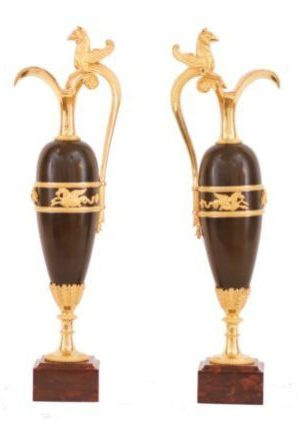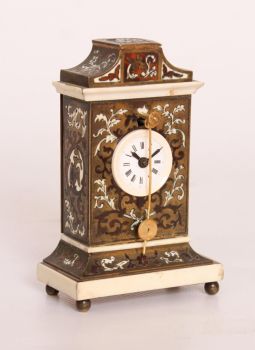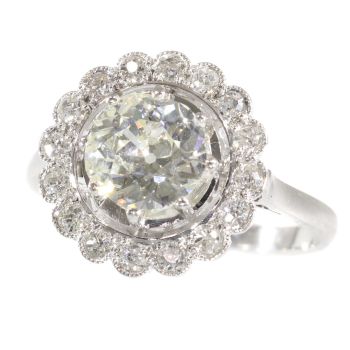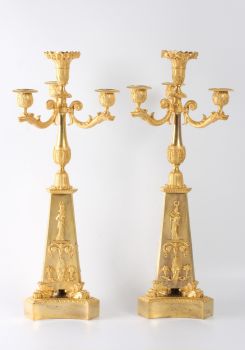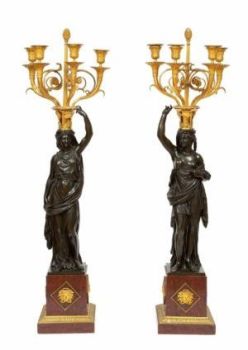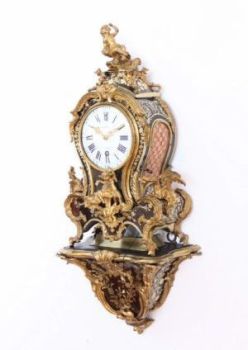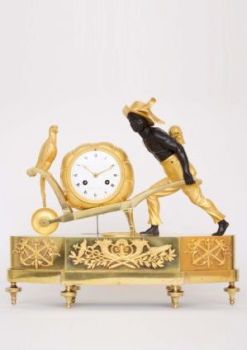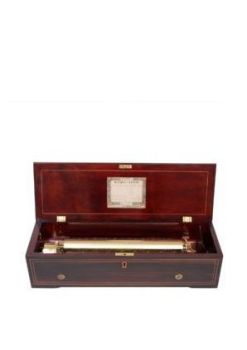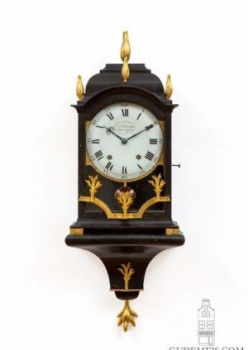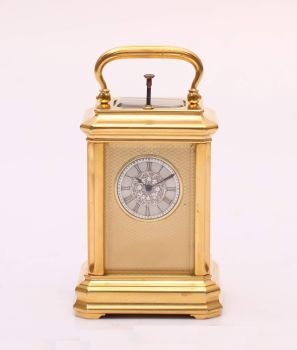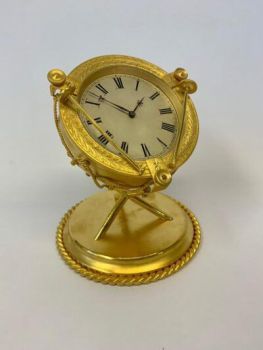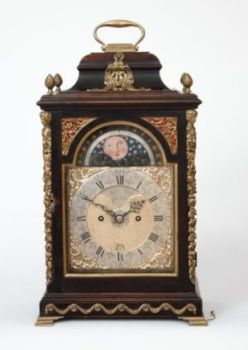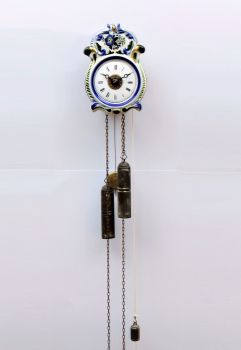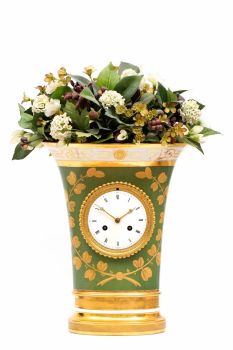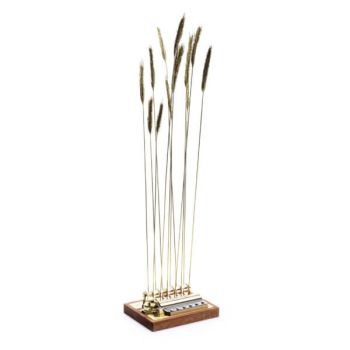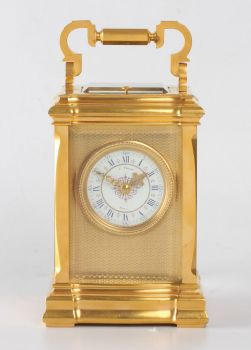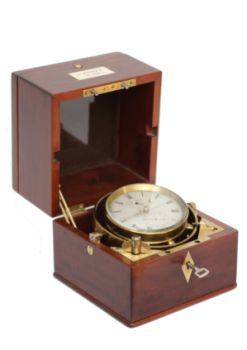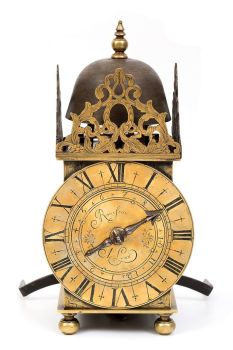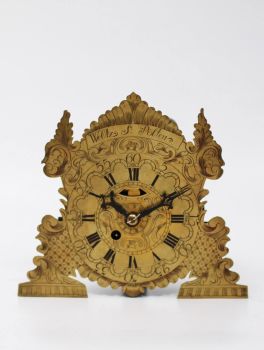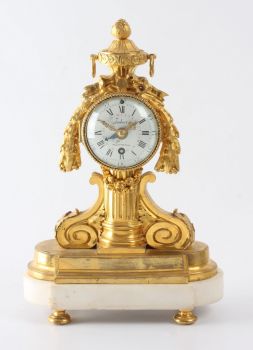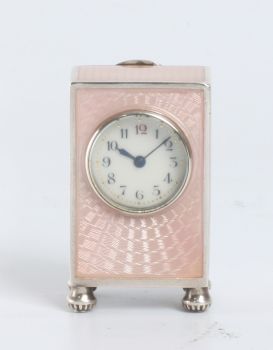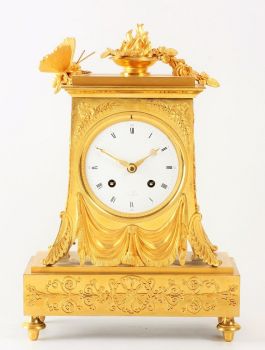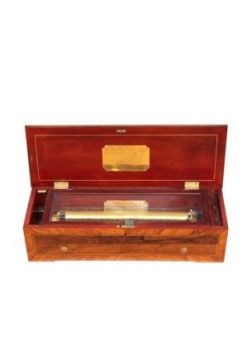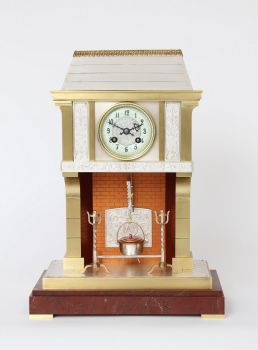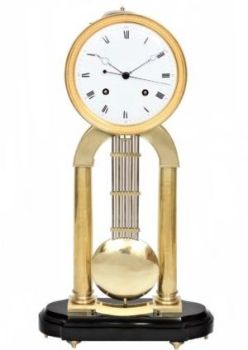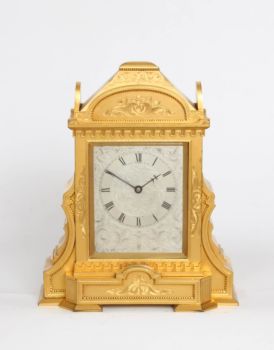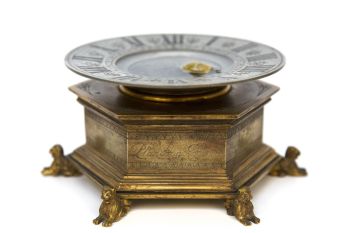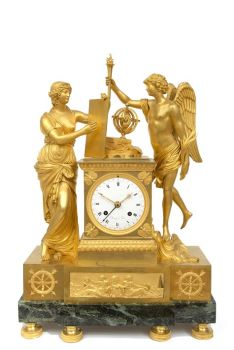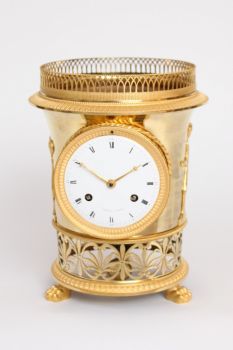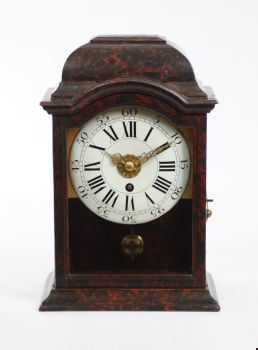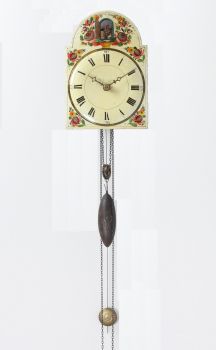A pair of empire patinated bronze and fire gilded ewers, Circa 1810 1810
Unknown artist
38 ⨯ 12 ⨯ 6.50 cm
€ 12.500
Gude & Meis Antique clocks and Music Boxes
- About the artworkThe ewers
These two elegant ewers have a griotte red marble base and are decorated with masks and seahorses in the patinated bronze middle.
The handles form into winged griffins resting on, but not attached to the spout.
The bronze work is finely ciseled and the fire gilding is in excellent condition.
The style
The winged griffins are in the same style as the mythical winged female figures
with which the well-known bronzier Claude Galle decorated handles of urns and vases. Examples of which can be found in:
H. Ottomeyer & P. Pörschel, Vergoldete Bronzen, Münich, 1986, vol. I, FIGs. 5.12.6 and 5.12.9, pp. 364-365
A. de Gourcuff (ed.), Pavlovsk: The Palace and the Park, Paris, 1993, p. 121. - About the artist
It might happen that an artist or maker is unknown.
Some works are not to be determined by whom it is made or it is made by (a group of) craftsmen. Examples are statues from the Ancient Time, furniture, mirroirs, or signatures that are not clear or readible but as well some works are not signed at all.
As well you can find the following description:
•“Attributed to ….” In their opinion probably a work by the artist, at least in part
•“Studio of ….” or “Workshop of” In their opinion a work executed in the studio or workshop of the artist, possibly under his supervision
•“Circle of ….” In their opinion a work of the period of the artist showing his influence, closely associated with the artist but not necessarily his pupil
•“Style of ….” or “Follower of ….” In their opinion a work executed in the artist’s style but not necessarily by a pupil; may be contemporary or nearly contemporary
•“Manner of ….” In their opinion a work in the style of the artist but of a later date
•“After ….” In their opinion a copy (of any date) of a work of the artist
•“Signed…”, “Dated….” or “Inscribed” In their opinion the work has been signed/dated/inscribed by the artist. The addition of a question mark indicates an element of doubt
•"With signature ….”, “With date ….”, “With inscription….” or “Bears signature/date/inscription” in their opinion the signature/ date/ inscription has been added by someone other than the artist
Are you interested in buying this artwork?
Artwork details
Related artworks
Unknown artist
A white jade ‘Lotus Seedpod and Bug’ carving, Qing dynasty, 18th century18th century
Price on requestMenken Works of Art
Unknown artist
A COLLECTION OF FOUR SRI LANKAN IVORY BIBLE BOXES18th century
Price on requestZebregs & Röell - Fine Art - Antiques
1 - 4 / 12Unknown artist
A Surinam-themed Amsterdam long-case clock1746 - 1756
Price on requestZebregs & Röell - Fine Art - Antiques
 Curated by
Curated byGallerease Magazine
Unknown artist
Engels struttclock gesigneerd H.Rodrigues 42 Piccadilly 19th century
Price on requestNico van den Assem restauratie
1 - 4 / 24- 1 - 4 / 12

